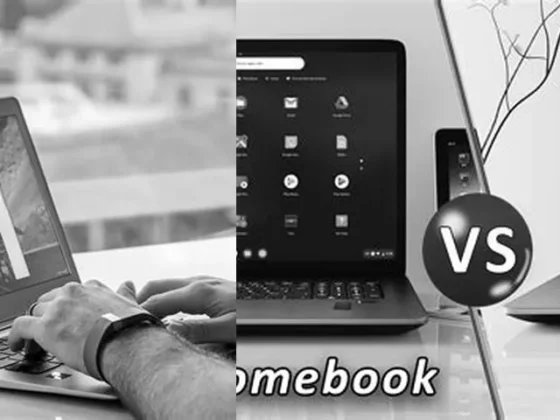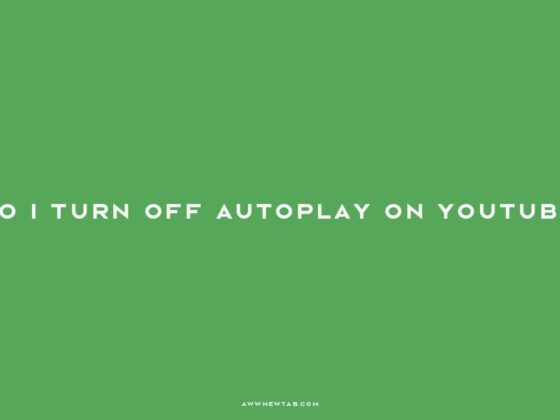What Happens When You Connect Your Phone To Your Chromebook: Have you ever wondered what happens when you connect your phone to your Chromebook? Brace yourself, because the possibilities are endless! From syncing chat notifications to effortless file sharing, this dynamic duo is about to revolutionize the way you communicate and work. Say goodbye to the hassle of switching between devices and hello to a seamless experience that will leave you wondering how you ever lived without it. So, grab your phone and get ready to explore the exciting world of phone-to-Chromebook connectivity. Trust me, you won’t want to miss out on this.
Syncing Chat Notifications: A Seamless Communication Experience
When you connect your phone to your Chromebook, one of the instant benefits is the synchronization of chat notifications. This feature ensures you’re always in the loop, no matter which device you’re currently using. For instance, if you’re working on your Chromebook and you receive a message on your phone, the notification will pop up on your Chromebook’s screen, allowing you to stay focused on your work without the constant need to switch devices.
How to Enable Notification Syncing
- Ensure both your phone and Chromebook have Bluetooth turned on.
- Pair your devices following the Bluetooth connection prompts.
- On your Chromebook, open the settings and navigate to the ‘Connected Devices’ section.
- Select your phone from the list and follow the setup process for Phone Hub.
- Once connected, you’ll be able to manage which notifications you’d like to sync.
Managing Your Synced Notifications
Having too many notifications can be overwhelming. Thankfully, Chromebooks allow you to customize which notifications you receive. Dive into the settings to select specific apps from which you want notifications synced, enabling a distraction-free environment tailored to your productivity needs.
Effortless File Sharing Between Devices
Sharing files between your phone and Chromebook becomes an incredibly easy task once you establish the connection. Whether it’s transferring photos, documents, or any other type of media, the process is straightforward and eliminates the need for cumbersome email attachments or cloud uploads.
Steps to Share Files
- Connect your phone to your Chromebook using a USB cable.
- On your phone, choose the option to access media from the notification that appears.
- Select “Allow” on your phone to enable file transfer.
- Your Chromebook will display your phone’s storage, allowing you to drag and drop files between devices.
Tips for Organizing Transferred Files
Once you’ve transferred your files, keeping them organized is key. Create specific folders on your Chromebook for different categories of files, such as ‘Work Documents’ and ‘Personal Photos’. This will save you time when searching for files later on and maintain a tidy digital workspace.
Text Messaging Directly from Your Chromebook
The ability to send and receive text messages on your Chromebook adds a layer of convenience that can’t be overstated. Whether you’re deep into your work or your phone is out of reach, having text capabilities on your Chromebook means you’re always connected.
Setting Up Text Messaging
- Connect your phone to your Chromebook via Bluetooth.
- Open the Phone Hub on your Chromebook and complete the setup.
- Once connected, you can start sending and receiving text messages from your Chromebook’s interface.
Maximizing Your Messaging Efficiency
With text messaging enabled on your Chromebook, consider setting up message templates for common responses to save time. Additionally, explore keyboard shortcuts to speed up your typing and navigate through conversations more efficiently.
Screen Mirroring: Expanding Your Visual Workspace
Connecting your phone to your Chromebook isn’t limited to file sharing or message syncing; it also extends to screen mirroring. This feature is invaluable for presentations, watching videos, or simply enjoying a larger view of your mobile apps.
How to Mirror Your Phone Screen
- Connect your phone to your Chromebook with a USB cable.
- On your phone, select the prompt to allow access to media files.
- Choose “Allow” to start mirroring your phone’s screen on your Chromebook.
Note: Screen mirroring functionality may vary based on your phone’s make and model, and it may require additional software or apps.
Optimizing Your Mirroring Experience
To ensure a smooth screen mirroring experience, make sure both your phone and Chromebook are updated to the latest software versions. Close unnecessary apps on your phone to improve performance and reduce lag. Also, adjust the display settings on your Chromebook to match the aspect ratio and resolution of your phone for the best visual quality.
Bluetooth vs USB: Which Connection to Choose?
Connecting your phone to your Chromebook can be done via Bluetooth or a USB cable. While Bluetooth is ideal for syncing notifications and text messages, a USB connection is better suited for file transfers and screen mirroring due to its stability and speed.
Deciding Between Bluetooth and USB
- Bluetooth: Best for wireless convenience and syncing notifications/messages.
- USB: Preferred for faster data transfer rates and screen mirroring.
Best Practices for a Stable Connection
Maintain a close proximity between your devices when using Bluetooth to prevent disconnections. When using a USB cable, ensure it’s high-quality and supports data transfer, not just charging, to avoid interruptions during file sharing or mirroring.
Remote Access to Android and Chromebook Devices
RemotePC allows you to remotely access your Android phone and Chromebook, giving you the freedom to manage your devices from anywhere. This capability is especially useful for troubleshooting, accessing files, or using your phone or Chromebook when you’re away from them.
Setting Up RemotePC
- Download and install the RemotePC app on both your phone and Chromebook.
- Create an account and log in on both devices.
- Follow the app’s instructions to establish a remote connection between your devices.
Enhancing Remote Work with RemotePC
With RemotePC, you can access your desktop environment from your phone, edit documents, or use applications as if you were sitting right in front of your Chromebook. This flexibility is a game-changer for remote workers and those who need to stay productive on the go.
Tethering: Internet on the Go
You can use your phone’s mobile data to connect your Chromebook to the internet through tethering or a portable hotspot. This is particularly useful when Wi-Fi is unavailable, and you need an internet connection for your Chromebook.
How to Set Up a Hotspot or Tethering
- On your phone, navigate to the hotspot or tethering settings.
- Enable the hotspot feature and configure a strong password.
- On your Chromebook, open the Wi-Fi settings and connect to your phone’s hotspot using the password you set up.
Maximizing Your Data Plan
When using your phone as a hotspot, keep an eye on your data usage to avoid overages. Consider setting a data limit on your phone or use data saver options to reduce consumption. Additionally, prioritize tasks that require less bandwidth when tethered to conserve data.
In conclusion, connecting your phone to your Chromebook unlocks a multitude of functionalities designed to streamline your digital life. From syncing notifications to remote access, each feature is intended to enhance productivity and connectivity. By following the above guidelines and tips, you can ensure a seamless integration between your devices and make the most of their combined capabilities.
FAQ & Related Questions about Connecting Your Phone to Your Chromebook
Q: What can I do when I connect my phone to my Chromebook?
A: When you connect your phone to your Chromebook, you can sync chat notifications, share files, and send and receive text messages on your Chromebook.
Q: How can I display my phone screen on my Chromebook?
A: To display your phone screen on your Chromebook, connect your phone to the Chromebook via a USB cable. From your phone’s screen, choose the option to access the media. Select “Allow” and it will start screen mirroring.
Q: Can I connect my phone to my Chromebook via USB?
A: Yes, you can connect your phone to your Chromebook via a USB cable. However, if you want to see your notifications, messages, and other phone information on your Chromebook, you must use Bluetooth to set up Phone Hub.
Q: Can I use my iPhone as a hotspot for my Chromebook?
A: Yes, you can use your iPhone’s mobile data to connect your Chromebook to the Internet. This is called tethering or using a portable hotspot.
Q: How do I connect my phone to my Chromebook via Bluetooth?
A: To connect your phone to your Chromebook via Bluetooth, click on the battery icon at the bottom right of your Chromebook. Then, under Bluetooth, select Bluetooth and choose the option to pair a new device. Select the device you want to connect and follow the on-screen instructions.
Q: Should I connect my phone to my Chromebook?
A: Connecting your Android phone to your Chromebook allows you to do more with your Chromebook. You can sync chat notifications, share files, and enjoy other features that enhance your experience.


